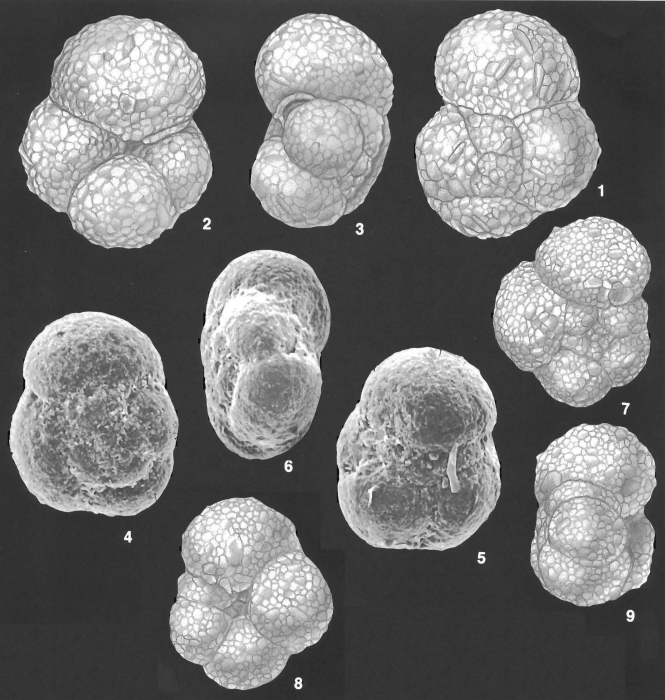
Trochammina hadai
Protozoans
Trochammina hadai is a large, benthic formaniferan, with a shell composed of spheroidal calcareous chambers. The shells of foraminifera are important for micropaleontological analysis of environmental conditions in sedimentary habitats, as they are sensitive to salinity and temperature. The foraminiferan Trochammina hadai is known from northwestern Pacific, in coastal waters of China and Japan and from Chilka Lake, India, on the Bay of Bengal. In its native range, it is characteristically abundant in brackish and eutrophic waters. In 1990, T. hadai was discovered in San Rafael Bay, part of central San Francisco Bay. It was absent in sediment surveys from the 1970s and early 1980s. An examination of early sediment samples found it in a sample collected in South San Francisco Bay in 1983, where it was 3% of the foraminiferal fauna. By 1986–87, it was widespread in the South Bay, and dominant at many locations. In surveys made along the West Coast in 1998, T. hadai was found to the south of San Francisco Bay down to San Diego Bay in southern California, and northwards to Comet and Padilla at the northern end of Puget Sound, and Prince William Sound, Alaska. Studies of sediment cores in Padilla Bay indicated that this foram was first present around 1958, and greatly increased in abundance around 1972. The actual site of first introduction on the West Coast is not clear. Trochammina hadai is abundant in ballast water sediment but transplants of Pacific Oysters (Magallana gigas) are also a possible vector. In other parts of the world where Trochammina hadai has been found it may have been transported by ballast water in larger commercial ports (France and Brazil) or by mud on anchors and/or sediments carried between smaller ports (Brazil, Australia).